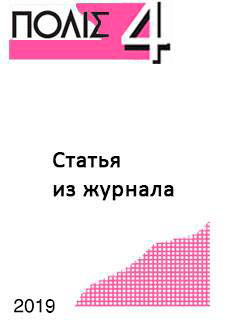Online shop of "Polis. Political Studies" Journal
We in the world, the world in us
Pustovoit Yu.A. How the Regime is Created: Power Coalitions in Siberian Cities. – Polis. Political Studies. 2019. No 4. P. 104-118
Free!
urban political regime, elitism, pluralism, the political elite, city, district, megalopolis, Siberia.
Why, and under what conditions, are regimes formed where, in one case, the focus is on the dominance of one actor, capable of changing the “rules of the game”, whilst in another, the possibilities of political actors are limited? The study is aimed at studying power groups in the urban community, considered within the framework of the concept of urban political regimes, which are a composite of formal and informal norms of interaction that develop between actors having access to institutionalized resources and forming a coalition for management of community. Initially, the focus was on the formation of a regime in a large industrial center, where a monopoly on power and personality were the main characteristics. Next, the hypothesis was formulated about the external (scale of the city, the projection of business interests and the specialization of enterprises) and internal (leadership strategy) factors in the formation of various regimes. The method of testing the hypothesis is a comparison of opposite cases: the regime in the industrial center was compared with the regime of the Siberian megalopolis. Further comparison was carried out in two areas of the same city with opposite socio-economic characteristics with the subsequent analysis of power in Siberian cities. A common characteristic of urban regimes is the limitations and motivation of participants. The independence of the actors depends on the requirements of the federal (in both cases) and regional (to a lesser extent for the metropolis) centers. The system of existing informal rules largely coincides with the characteristics of the “political machine” and is based on the personal interests of the coalition participants, and not on the dominance of political principles and ideologies. The differences in the strategies of the actors are the following: traditional leadership with an explicit program, concentration of resources, and an invasion of coalition members for the realization of declared goals in monopolistic, personified regions, and in “polyarchic” regions “sustainable action”, built on maximum secret and uncertainty of the goals of leadership and conclusion of a lot of alliances with different forces.
 English
English Русский
Русский

Reviews
There are no reviews yet.